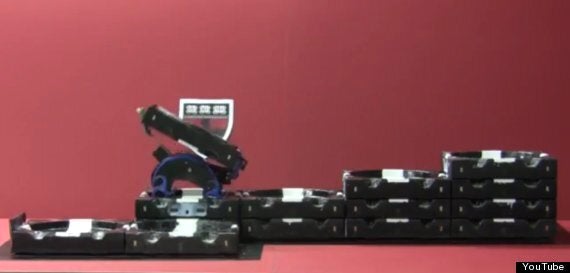Inspired by the mound-making abilities of termites, a team of clever Harvard folk have created a team of self-organising robots that can build construct buildings.
The TERMES bots require no oversight from a human operator or central command - instead they observe each other's behaviour and modify their own to suit the task at hand.
This type of communication - called stigmergy - is how termites can collectively build huge mounds over several lifespans and without knowing what every other termite in the colony is doing.

One of the robots in action
Justin Werfel of the Wyss Institute for Biologically Inspired Engineering at Harvard University, said: "Normally, at the beginning, you have a blueprint and a detailed plan of how to execute it, and the foreman goes out and directs his crew, supervising them as they do it
"In insect colonies, it's not as if the queen is giving them all individual instructions. Each termite doesn't know what the others are doing or what the current overall state of the mound is."
The TERMES robots can stack foam blocks and even create staircases to reach higher levels.
Complex algorithms allow large numbers of them to work together and the results have been impressive so far.
Because the system does not rely on a central command, it has the advantage of not breaking down if one or more parts fails.
Kirstin Petersen, a graduate student at Harvard SEAS, said: "We co-designed robots and bricks in an effort to make the system as minimalist and reliable as possible.
"Not only does this help to make the system more robust; it also greatly simplifies the amount of computing required of the onboard processor.
"The idea is not just to reduce the number of small-scale errors, but more so to detect and correct them before they propagate into errors that can be fatal to the entire system."